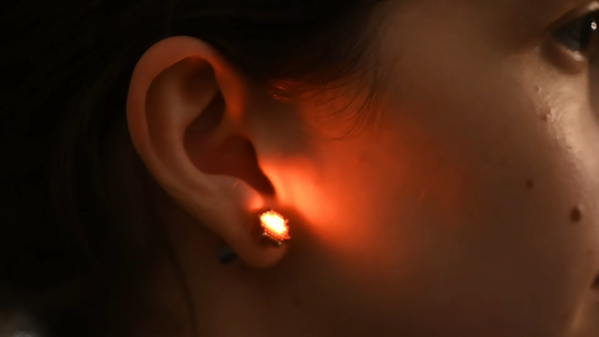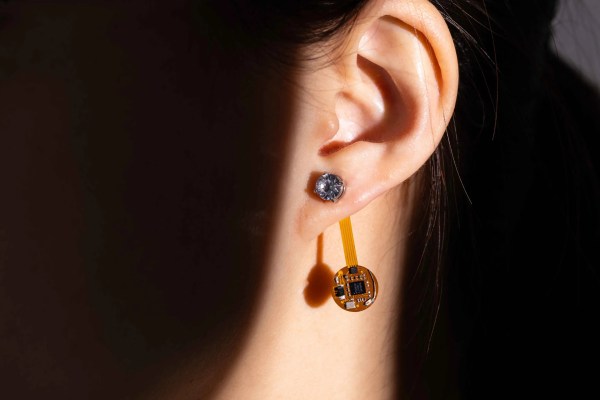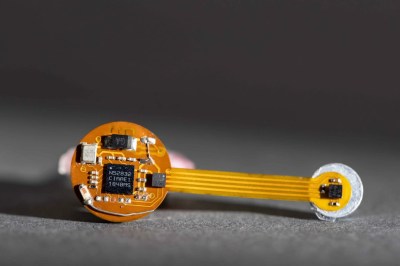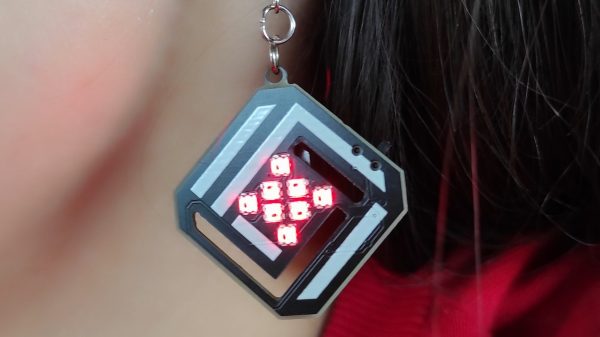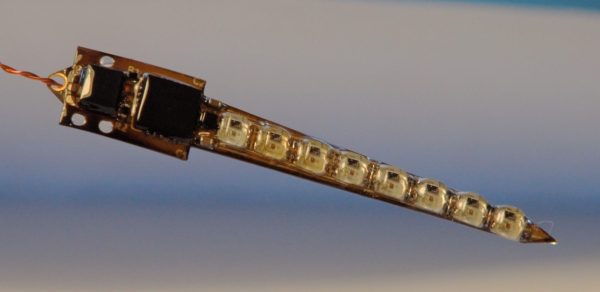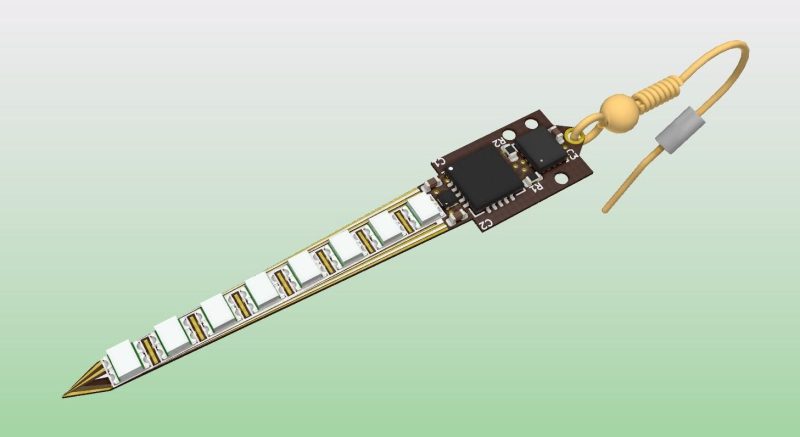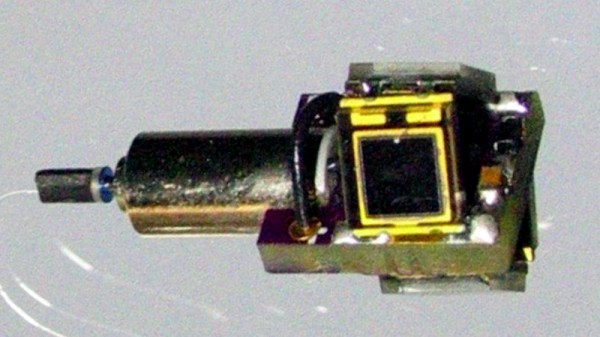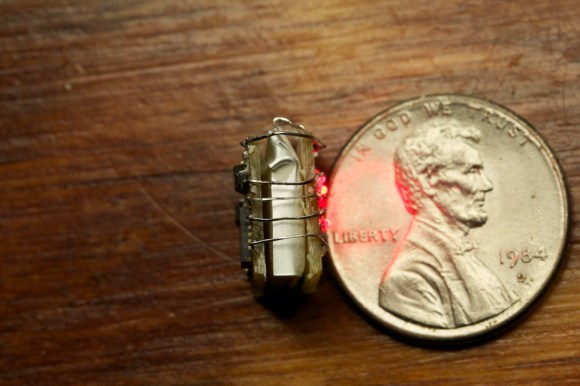We’ll be honest with you: we’re not sure if the use of “LED stud” in [mitxela]’s new project refers to the incomprehensibly tiny LED matrix earrings he made, or to himself for attempting the build. We’re leaning toward the latter, but both seem equally likely.
This build is sort of a mash-up of two recent [mitxela] projects — his LED industrial piercing, which contributes the concept of light-up jewelry in general as well as the power supply and enclosure, and his tiny volumetric persistence-of-vision display, which inspired the (greatly downsized) LED matrix. The matrix is the star of the show, coming in at only 9 mm in diameter and adorned with 0201 LEDs, 52 in total on a 1 mm pitch. Rather than incur the budget-busting expense of a high-density PCB with many layers and lots of blind vias, [mitexla] came up with a clever workaround: two separate boards, one for the LEDs and one for everything else. The boards were soldered together first and then populated with the LEDs (via a pick-and-place machine, mercifully) and the CH32V003 microcontroller before being wired to the power source and set in the stud.
Even though most of us will probably never attempt a build on this scale, there are still quite a few clever hacks on display here. Our favorite is the micro-soldering iron [mitxela] whipped up to repair one LED that went missing from the array. He simply wrapped a length of 21-gauge solid copper wire around his iron’s tip and shaped a tiny chisel point into it with a file. We’ll be keeping that one in mind for the future.

